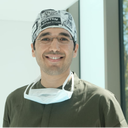Posted underRhinoplasty q&a
Strangely shaped nose, can the bone be fixed with fillers so I can only have surgery for the tip? (Photos)
Could I get some advice on what can be done with my nose please? I have a weird split in the middle of the bone and the tip is also bulky and droopy. I would like to have as little surgical intervention as possible, can the bone be fixed with nose fillers so I can only have surgery for the tip? Thank you!
Answers (71)
From board-certified doctors and trusted medical professionals
Dr. Ali Sajjadian, MD, FACS

Dr. Ali Sajjadian, MD, FACS
Board Certified Facial Plastic Surgeon
Answer
Dr. Randal Haworth, MD, FACS

Dr. Randal Haworth, MD, FACS
Board Certified Plastic Surgeon
Answer
Dr. Andrew Miller, MD

Dr. Andrew Miller, MD
Board Certified Facial Plastic Surgeon
Answer
More Rhinoplasty Questions
See all Rhinoplasty Q&AWE SEND PRETTY
EMAILS
What’s trending? Who’s turning heads? Which TikTok myths need busting? We’ve got you. No fluff, no gatekeeping—just real talk. Get our free, unfiltered newsletter.






